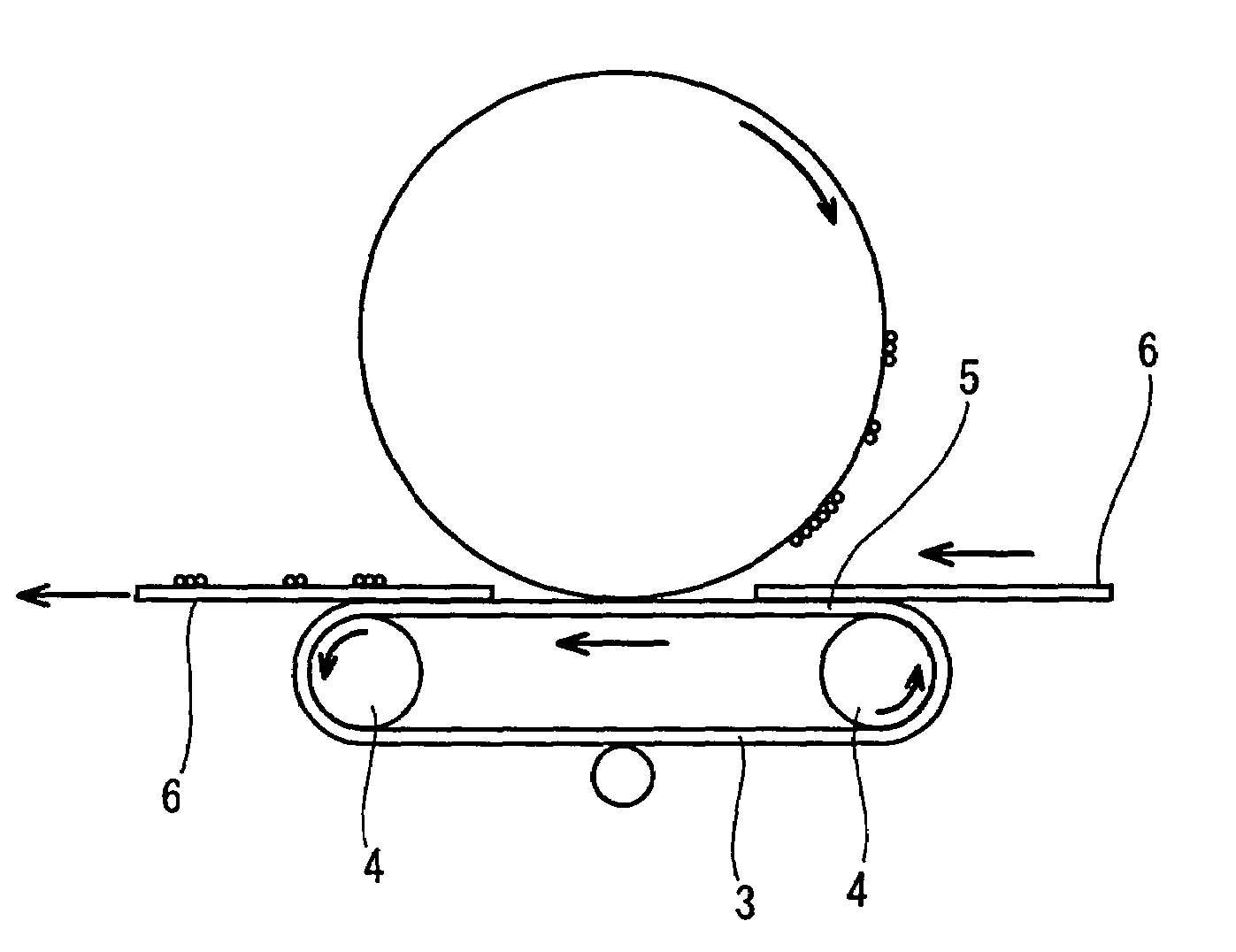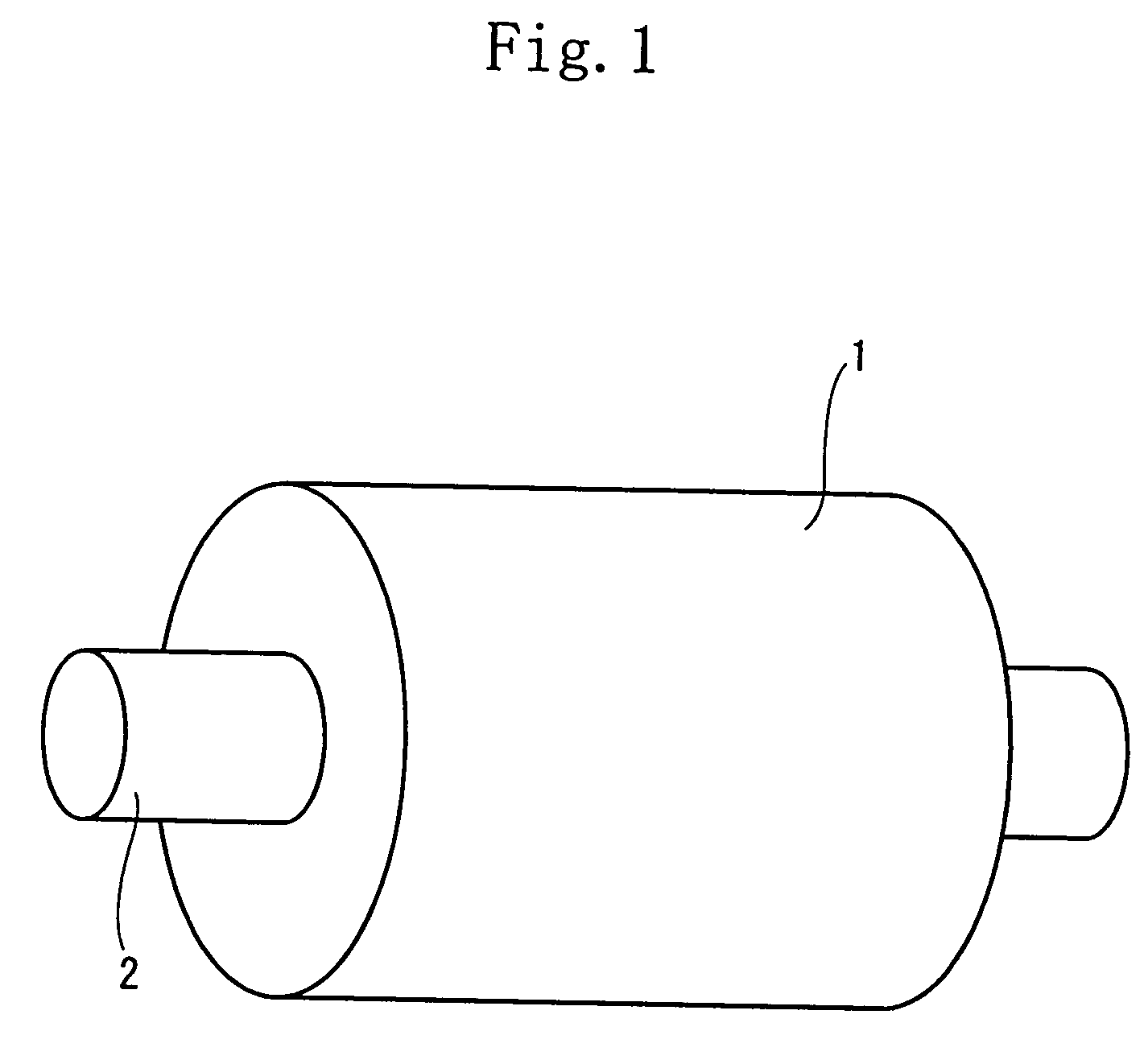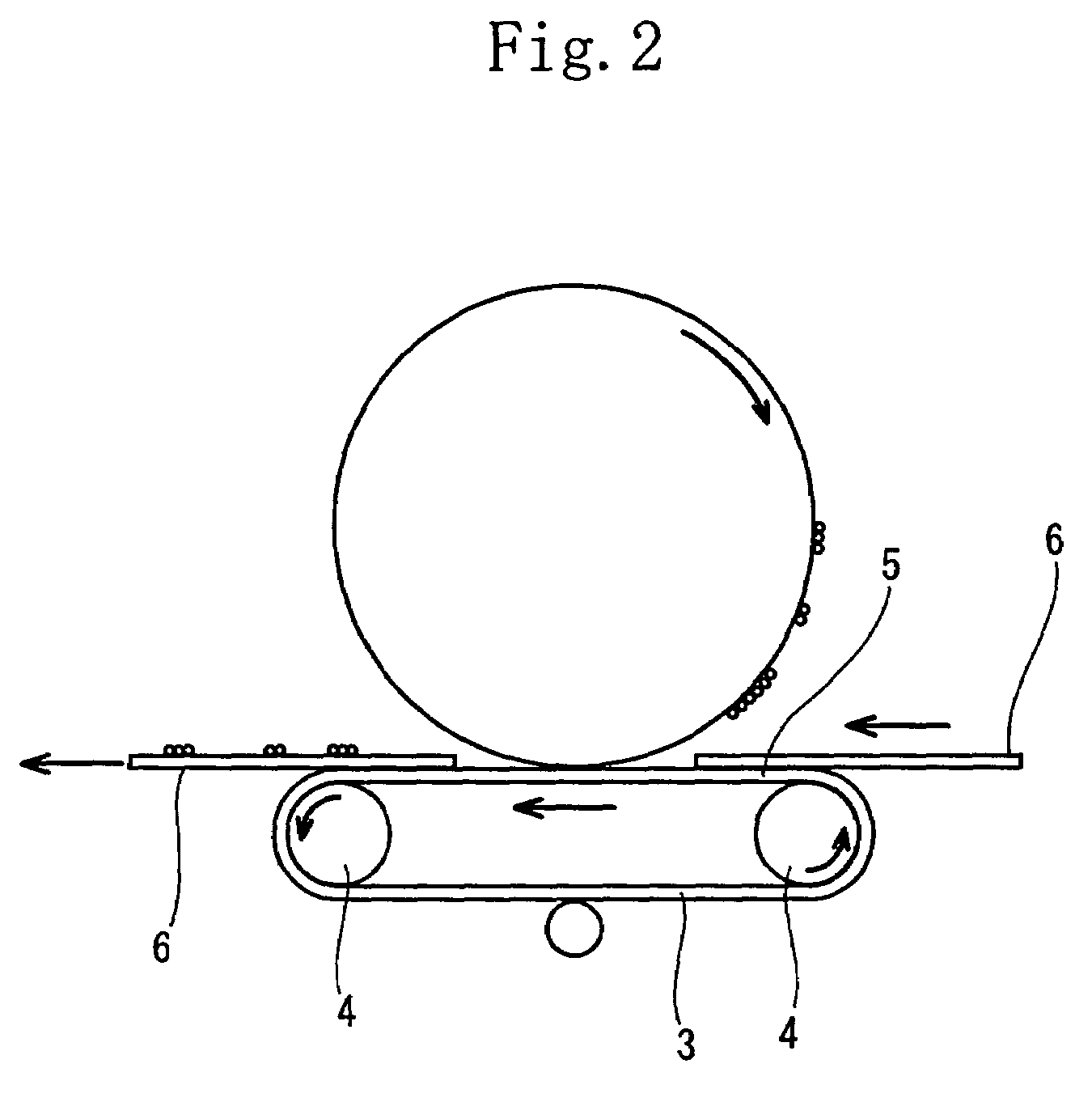Conductive elastomer composition and method of producing same
a technology of elastomer composition and conductive material, which is applied in the direction of conductive materials, non-conductive materials with dispersed conductive materials, synthetic resin layered products, etc., can solve the problems of low compression strain and thermoplasticity, difficulty in controlling electric resistance, and high material cost and production cost, so as to improve the conductivity of conductive elastomer composition and facilitate operations , the effect of favorable moldability
- Summary
- Abstract
- Description
- Claims
- Application Information
AI Technical Summary
Benefits of technology
Problems solved by technology
Method used
Image
Examples
examples 1 through 6
[0133]As shown in table 1, the conductive roller of each of the examples 1 through 6 included a conductive polymer composition containing the compound (A1) containing the hydrogenated styrene thermoplastic elastomer, the olefin resin, and a required amount of the softener; and the compound (A2), containing the EPDM as its main component and a required amount of the softener, dispersed in the compound (A1) by dynamically crosslinking the compound (A2). An ionic-conductive agent containing the metal salt and the polyether-containing block copolymer resin was dispersed in each of the mixture of compounds (A1) and (A2) at a specified volume fraction. The amount of the ionic-conductive agent contained in the conductive elastomer composition of the comparison example 6 was 6 parts by weight, less than 10 parts by weight.
examples 7 through 13
[0183]In the examples 7 through 13, a dynamically crosslinked mixture of 200 parts by weight (including oil 100%) of the EPDM and 100 parts by weight of a hydrogenated styrene TPE compound was used as the thermoplastic elastomer composition. In the each of the examples 7, 10–13, the conductive agent 1 was used as the ionic-conductive agent (B) containing the metal salt and the polyether-containing block copolymer resin. In the examples 7, 10, 11, the conductive agent 1 was mixed with the thermoplastic elastomer composition in such a way that the conductive agent 1 was dispersed in the matrix component of the thermoplastic elastomer composition at 9.8 wt % to 28.6 wt % with respect to the matrix component of the thermoplastic elastomer composition. The conductive agent 1 was used at 4.8 wt % and 37.5 wt % in the examples 12 and 13 respectively for 100 wt % of the matrix component of the thermoplastic elastomer composition.
[0184]In the example 8, the conductive agent 2 was used as the...
example 14
[0209]57 parts by weight of paraffin oil which is a softener was added to a mixture of 32 parts by weight of Septon 4077 (SEEPS), produced by Kuraray, which is a hydrogenated styrene thermoplastic elastomer and 11 parts by weight of polypropylene (PP) which is an olefin resin. After the mixture was allowed to stand overnight, it was extruded at 180° C. and 200 rpm by a biaxial extruder manufactured by Ipeck Inc. to obtain a pellet.
[0210]The following substances were added to the pellet: 3.5 parts by weight of zinc oxide, 12 parts by weight of a resinous crosslinking agent (9 parts by weight of Tackrol 201 produced by Taoka Chemical and 3 parts by weight of Tackrol 250-III produced by Taoka Chemical), 15 parts by weight of polypropylene (PP), and 200 parts by weight (of 200 parts by weight, 100 parts by weight was oil) of Esprene 670F (oil-extended EPDM) produced by Sumitomo Chemical. The mixture was supplied to the biaxial extruder to perform dynamic crosslinking at 200° C. and 200 ...
PUM
| Property | Measurement | Unit |
|---|---|---|
| Temperature | aaaaa | aaaaa |
| Fraction | aaaaa | aaaaa |
| Fraction | aaaaa | aaaaa |
Abstract
Description
Claims
Application Information
 Login to View More
Login to View More - R&D
- Intellectual Property
- Life Sciences
- Materials
- Tech Scout
- Unparalleled Data Quality
- Higher Quality Content
- 60% Fewer Hallucinations
Browse by: Latest US Patents, China's latest patents, Technical Efficacy Thesaurus, Application Domain, Technology Topic, Popular Technical Reports.
© 2025 PatSnap. All rights reserved.Legal|Privacy policy|Modern Slavery Act Transparency Statement|Sitemap|About US| Contact US: help@patsnap.com



